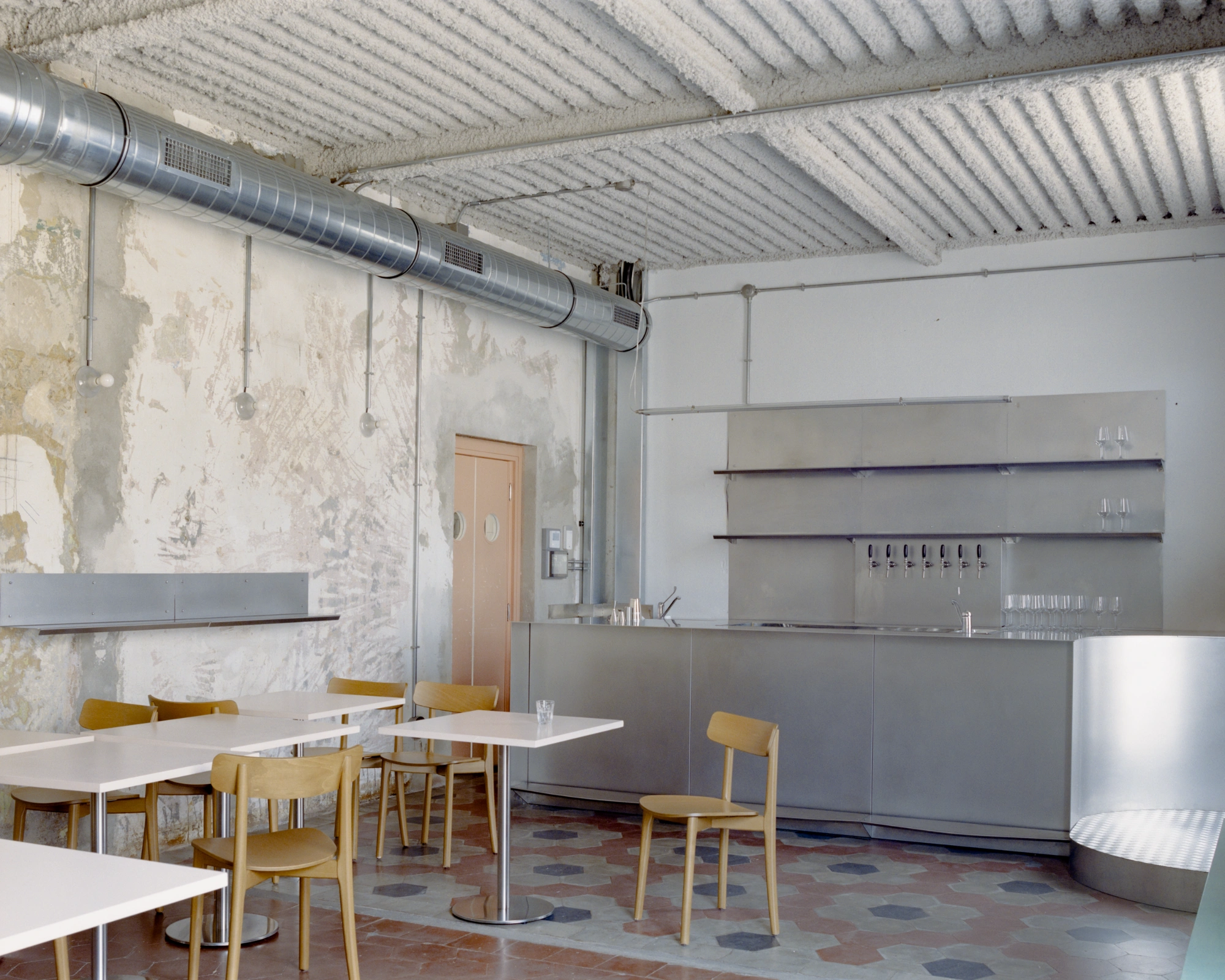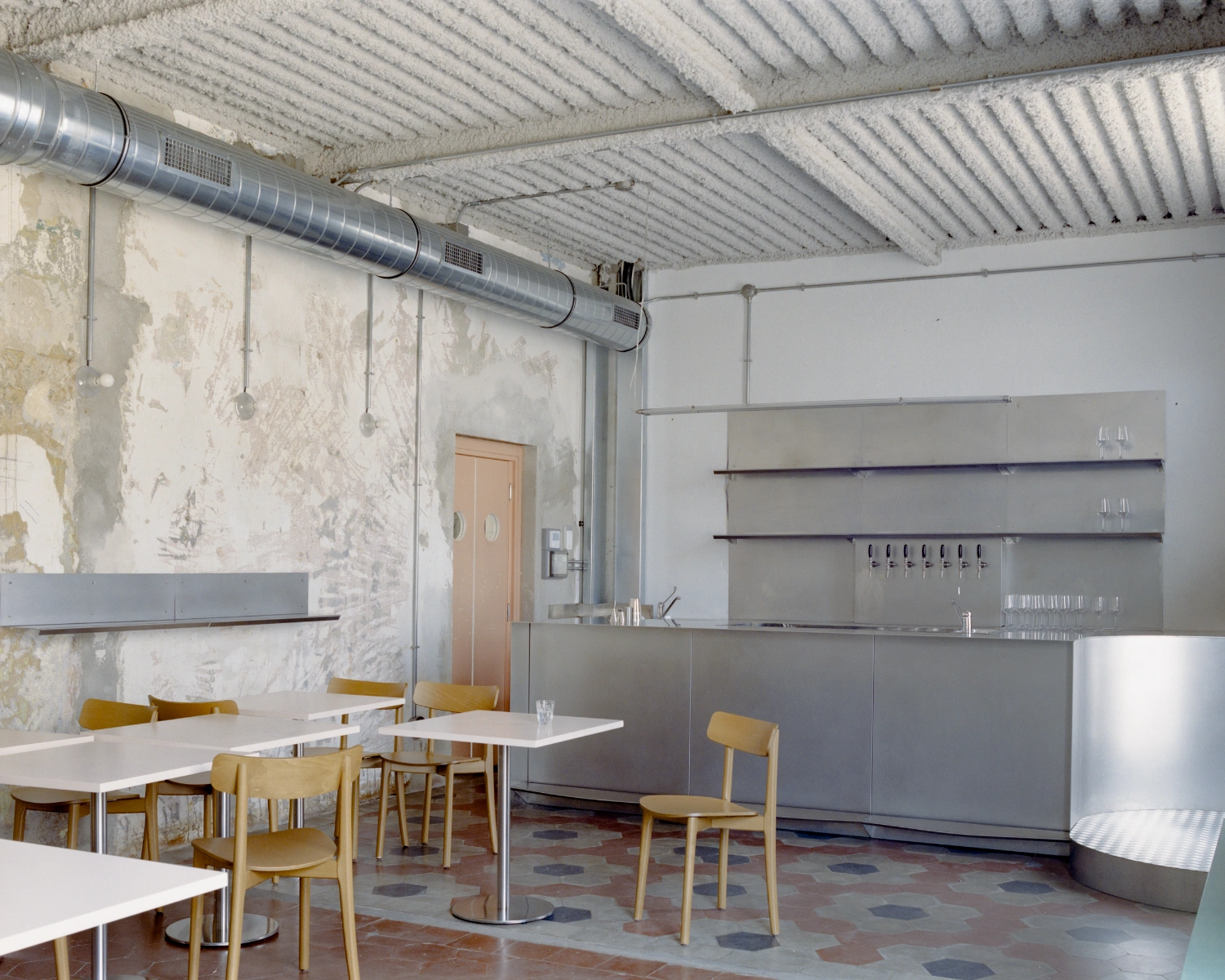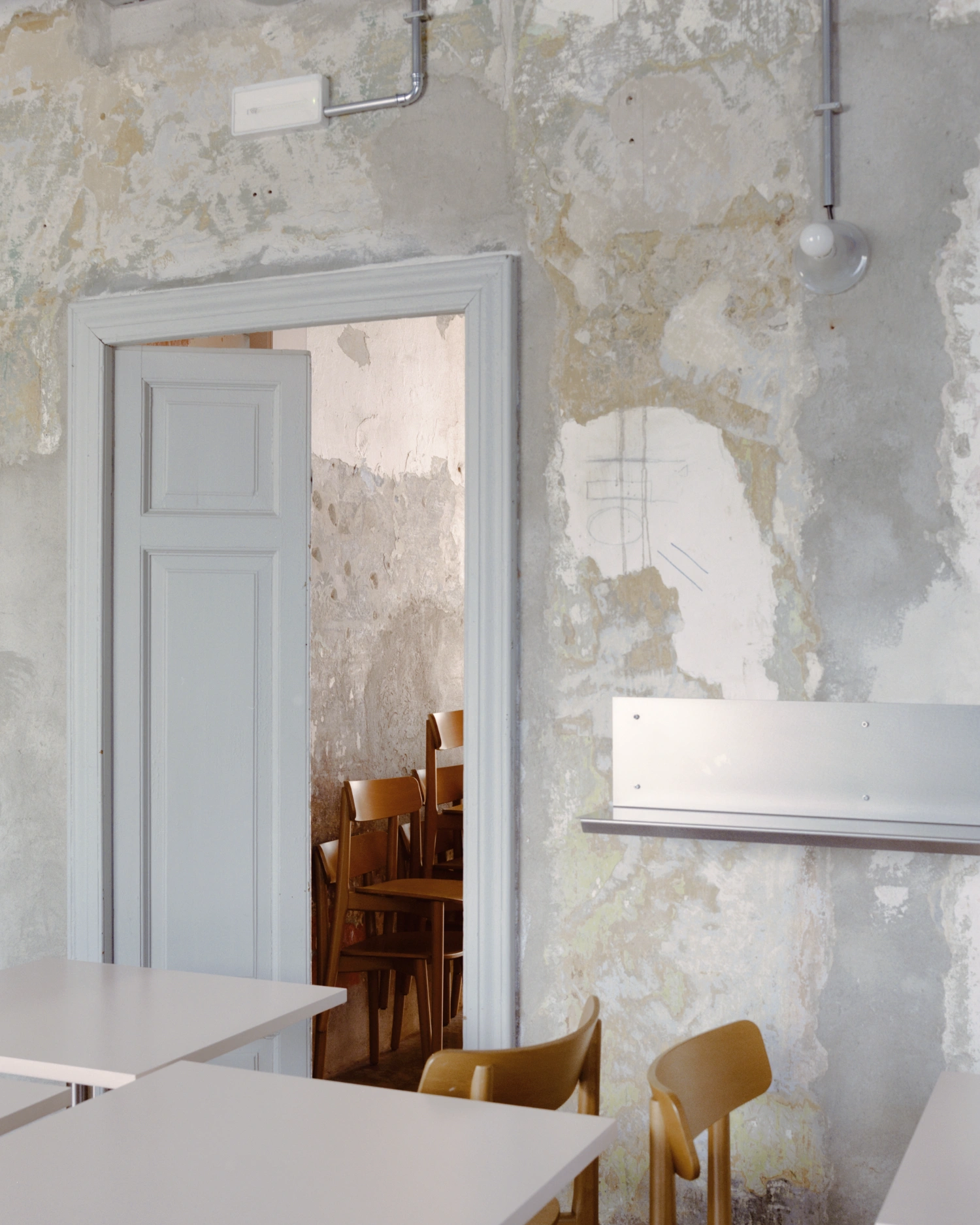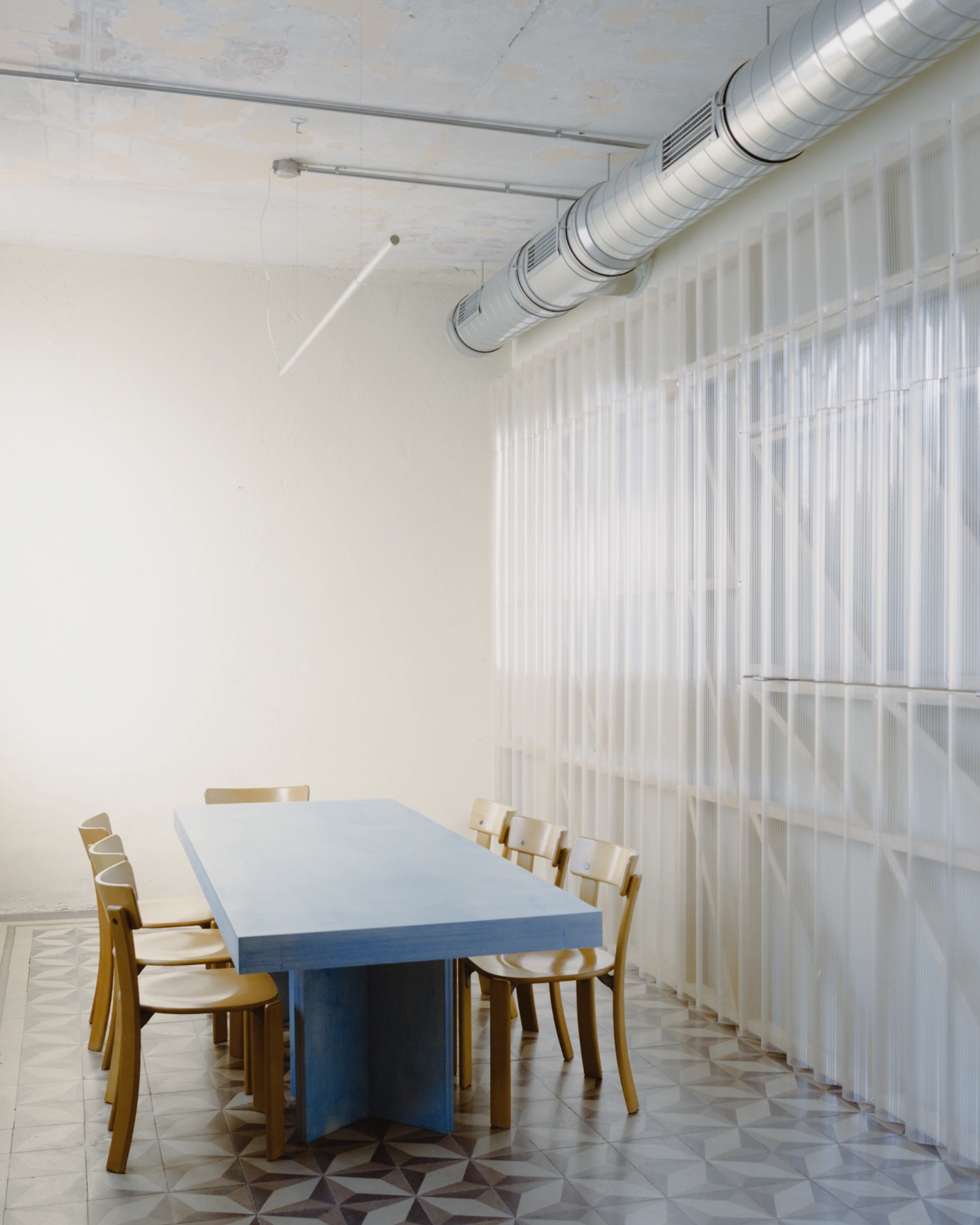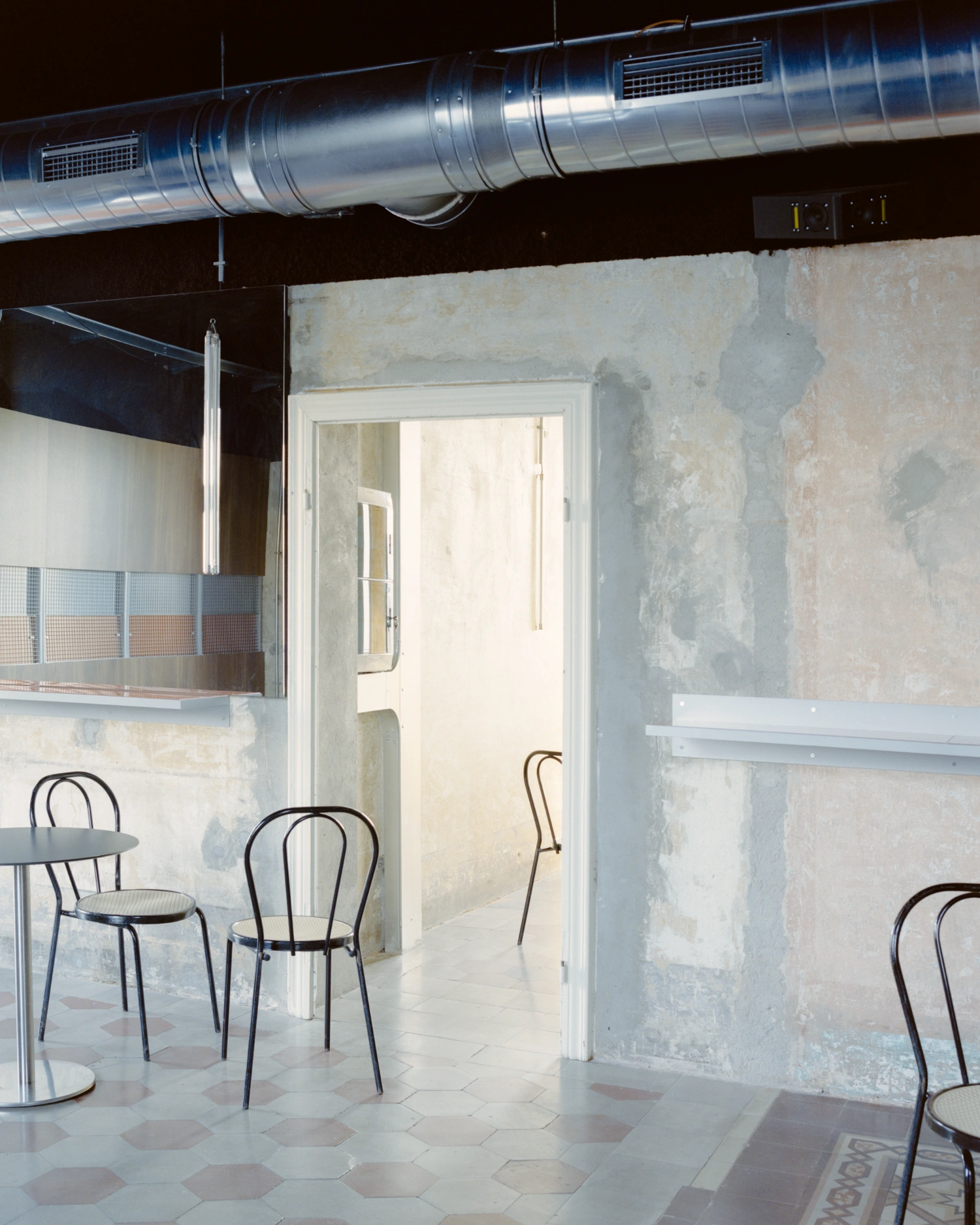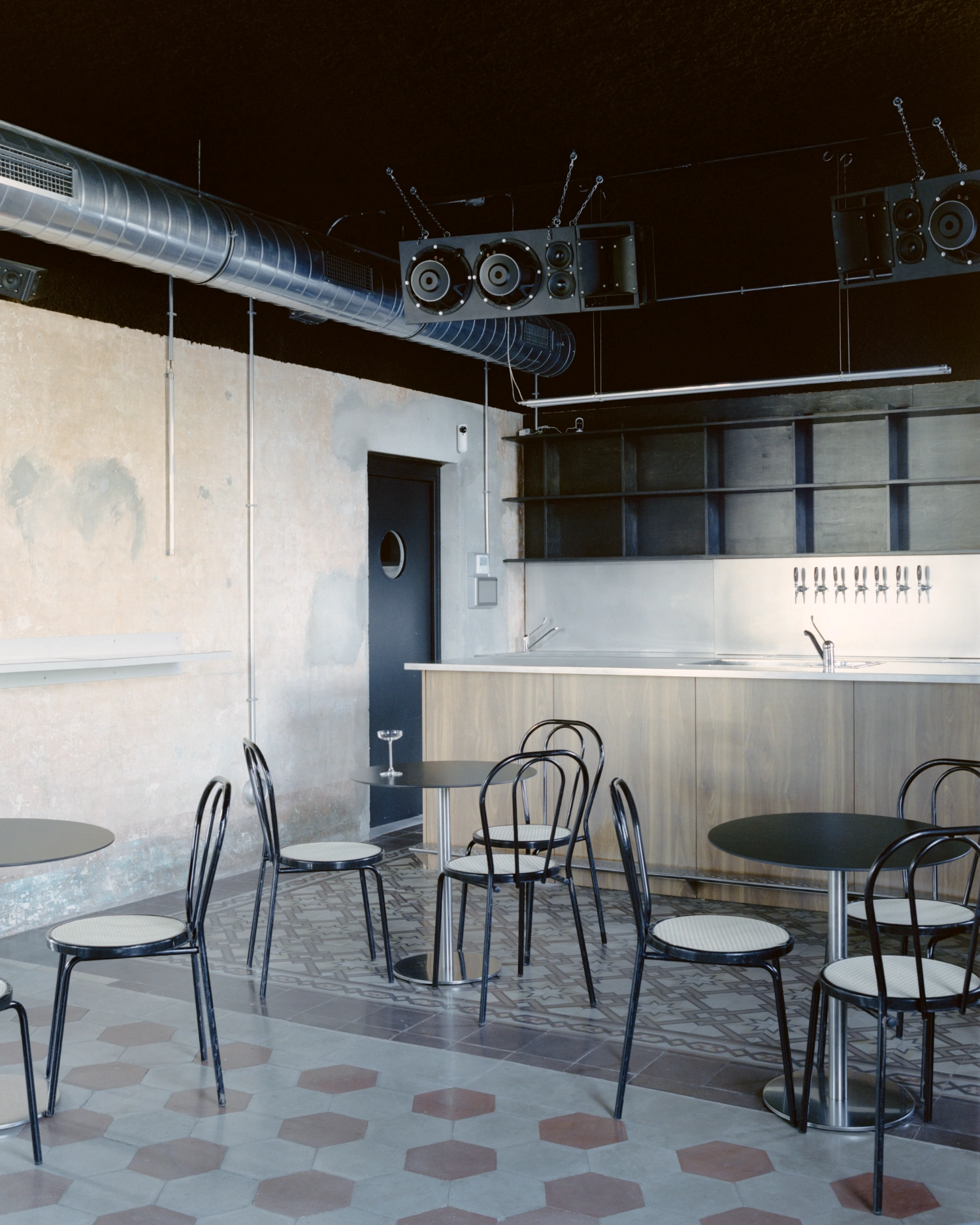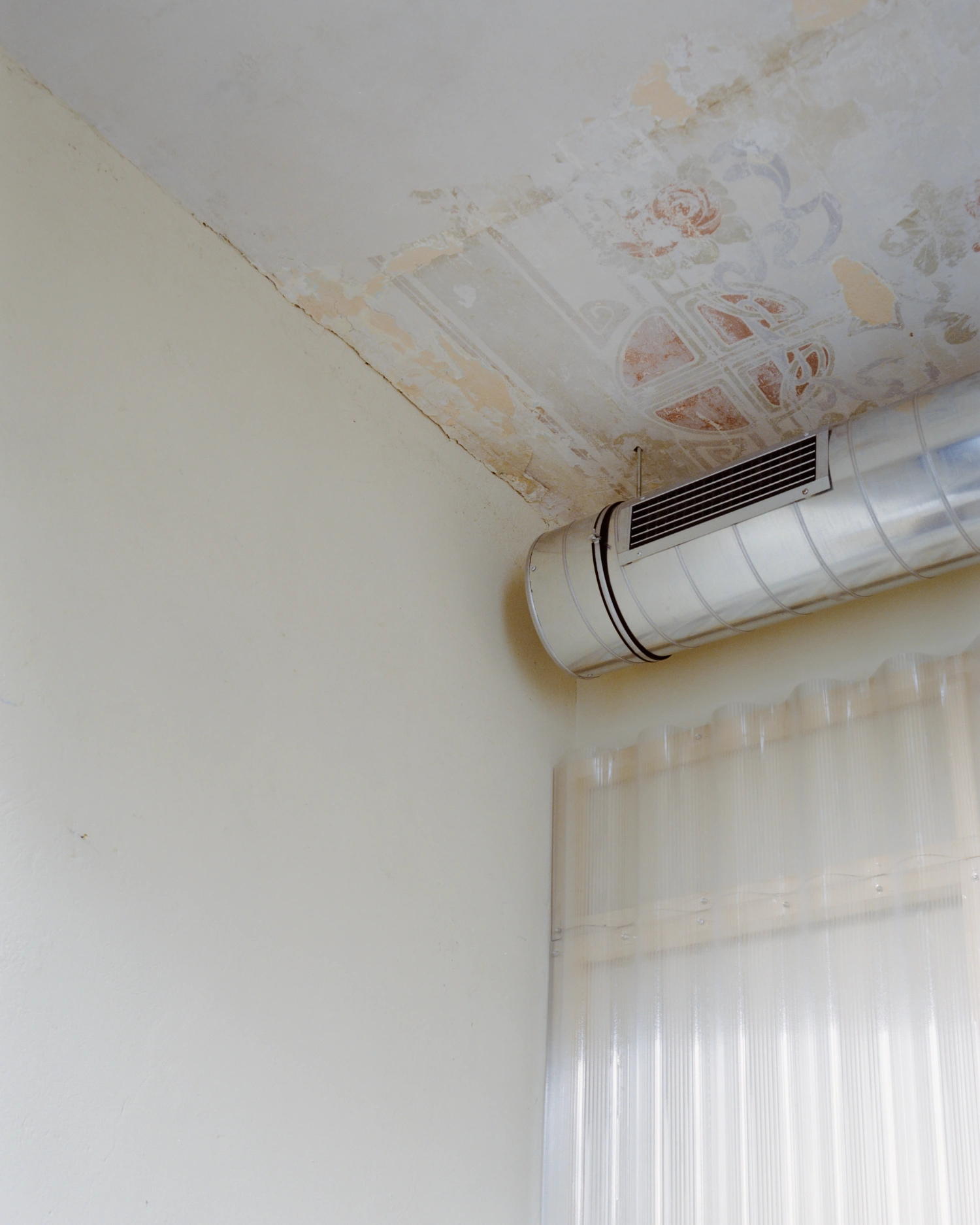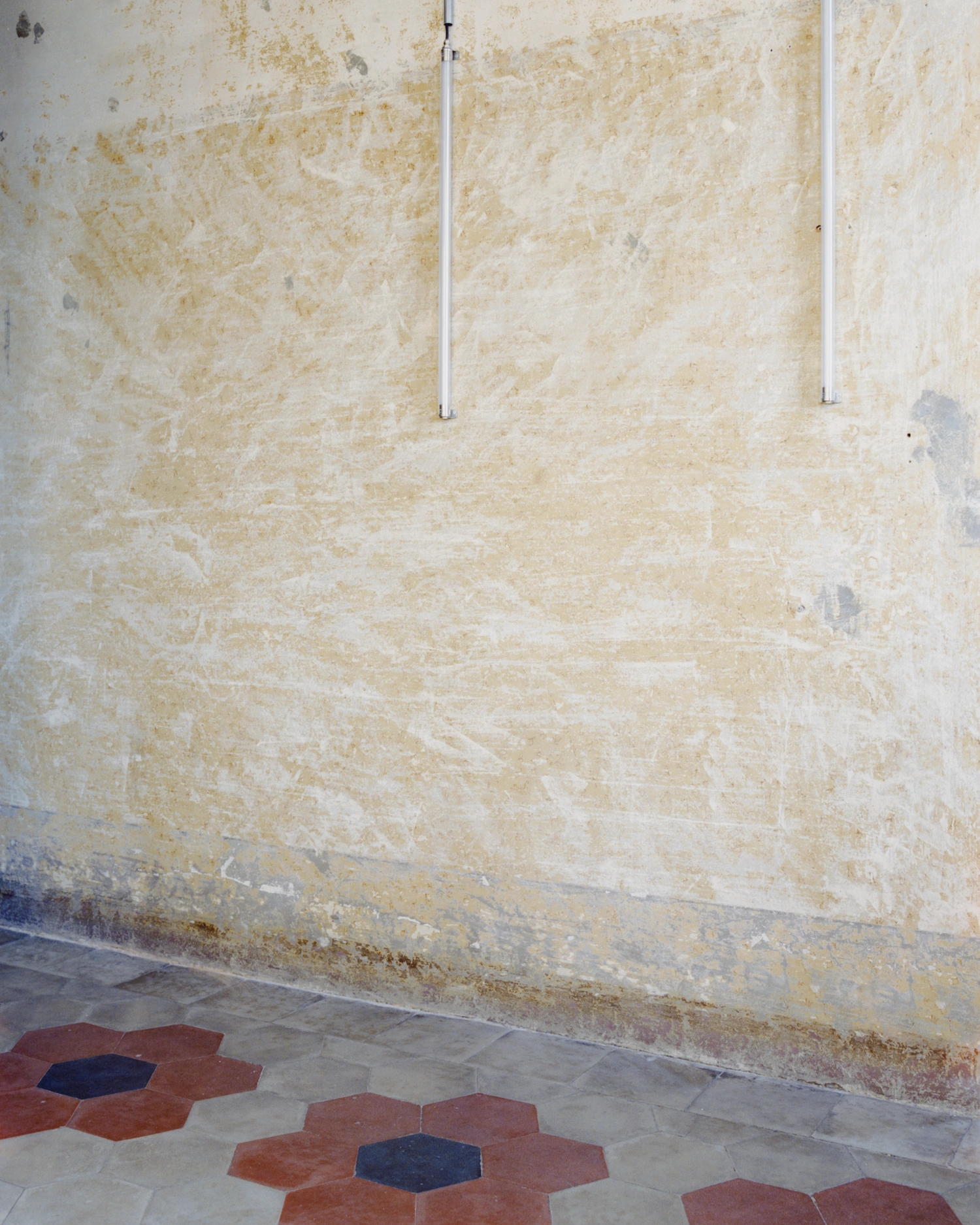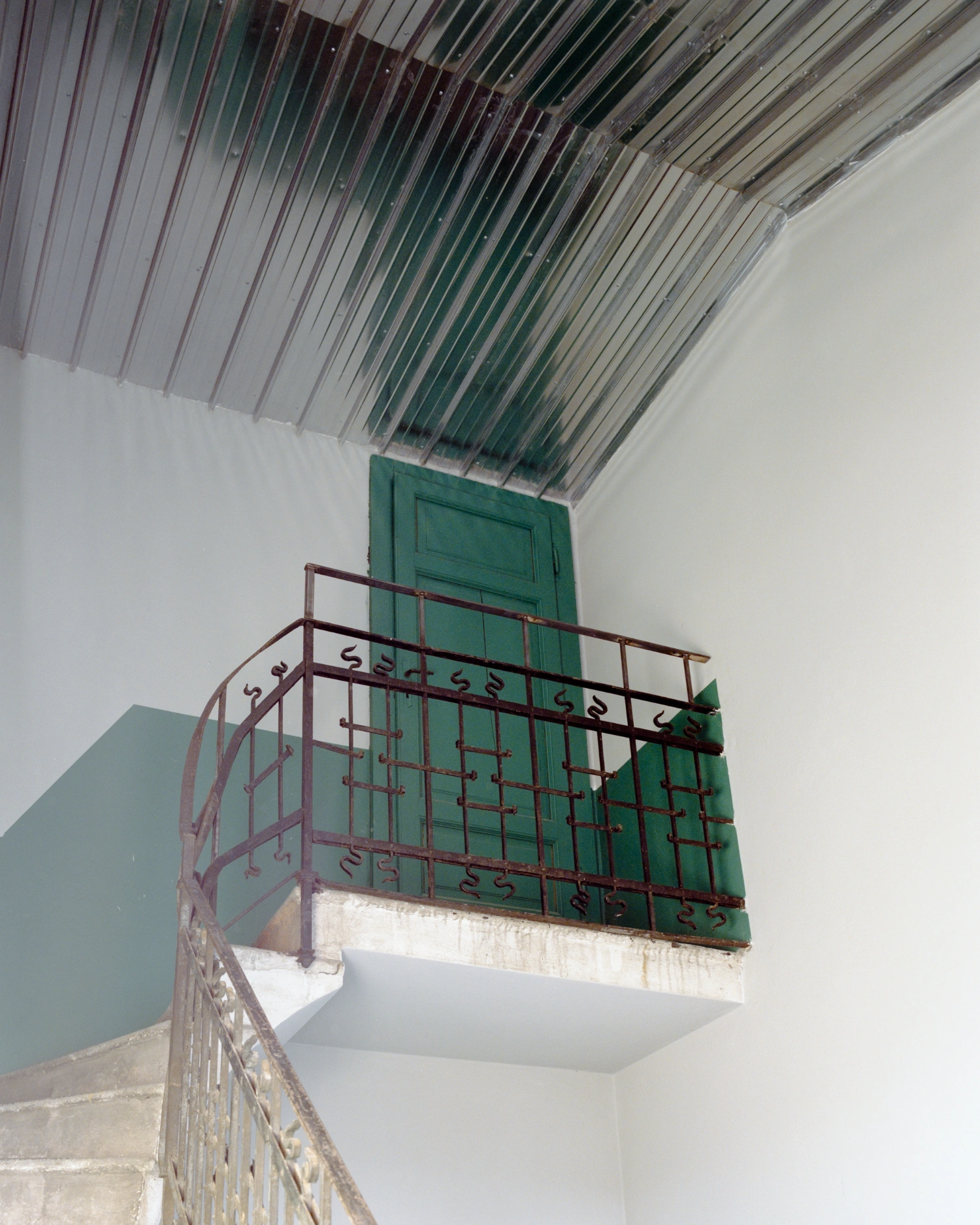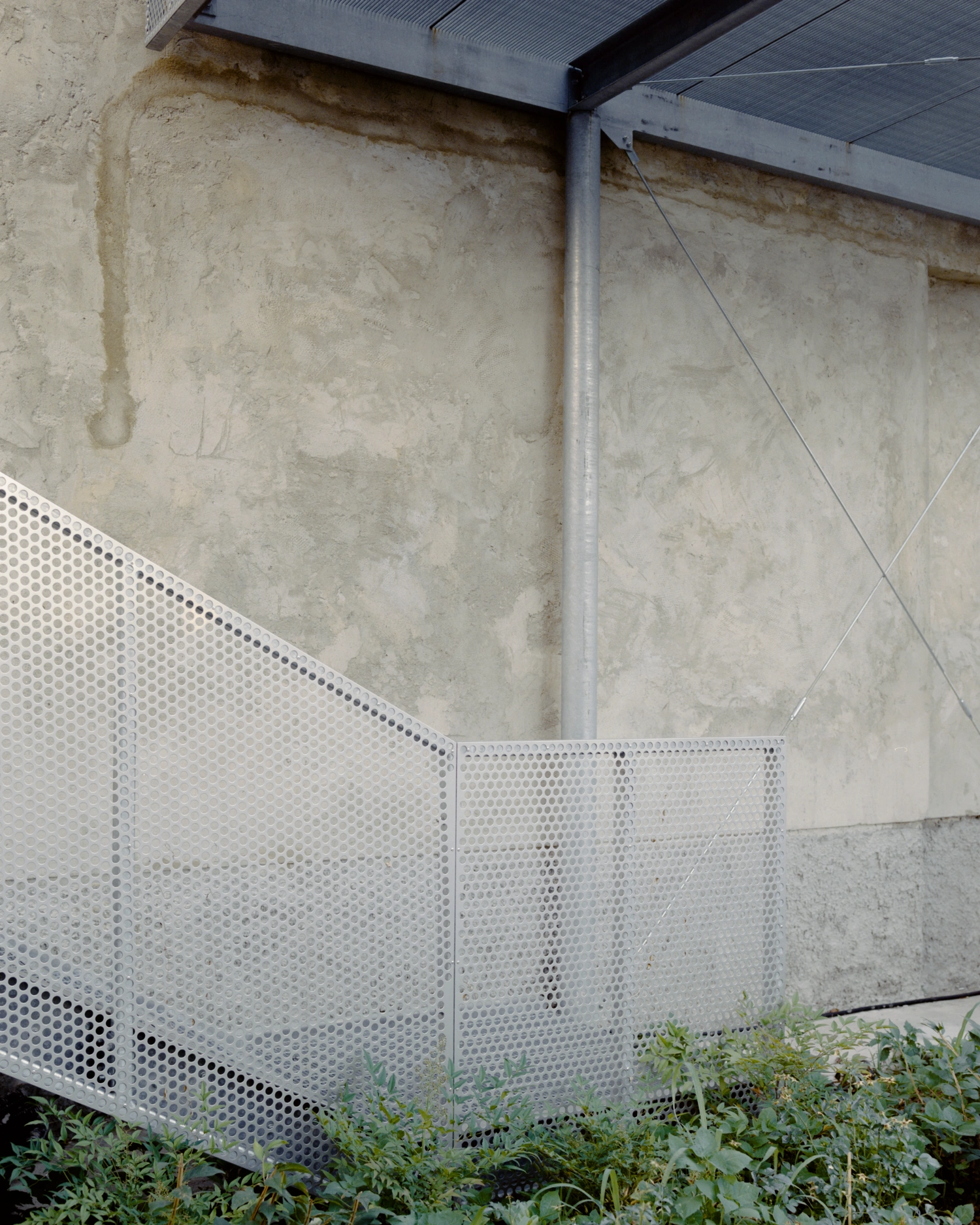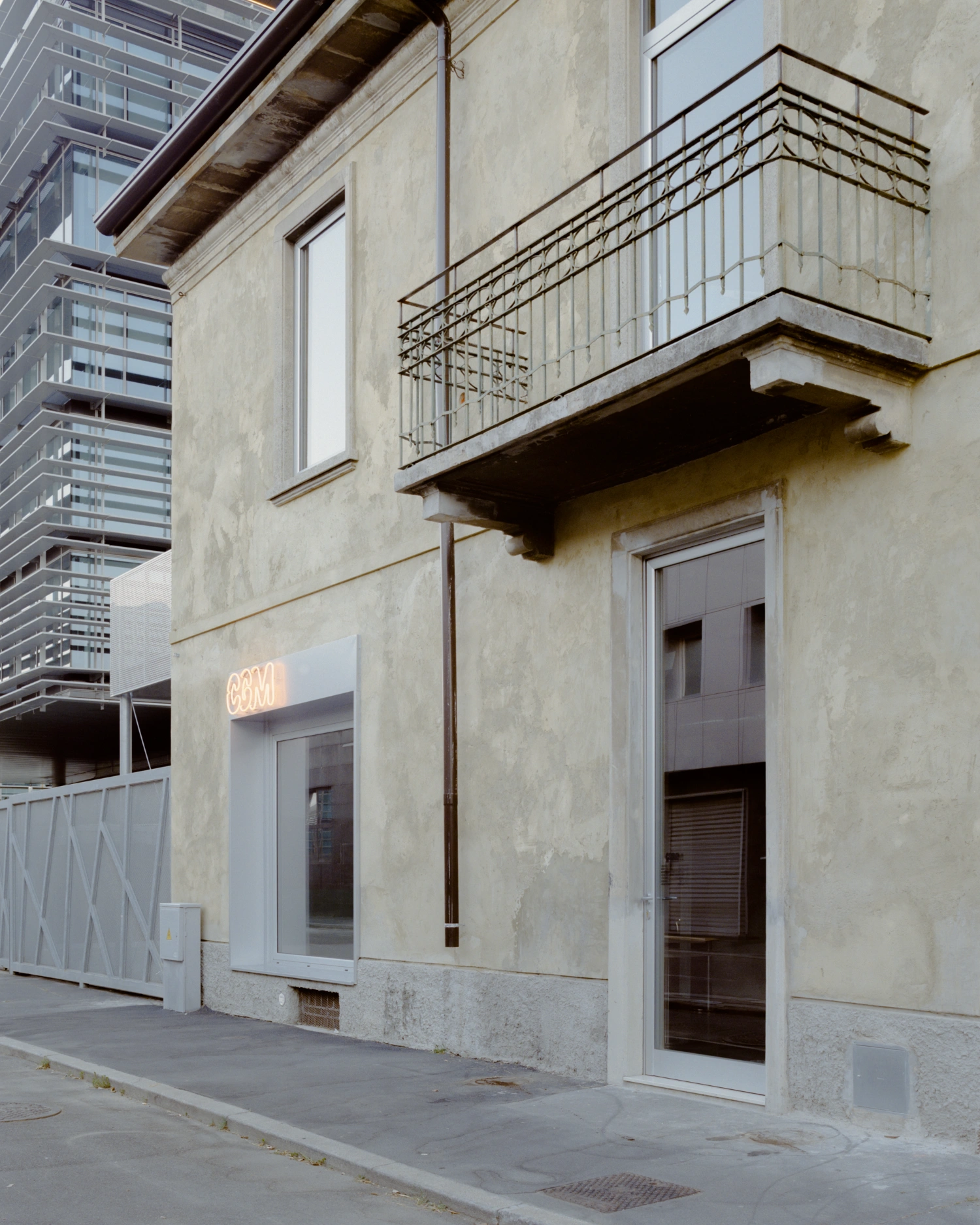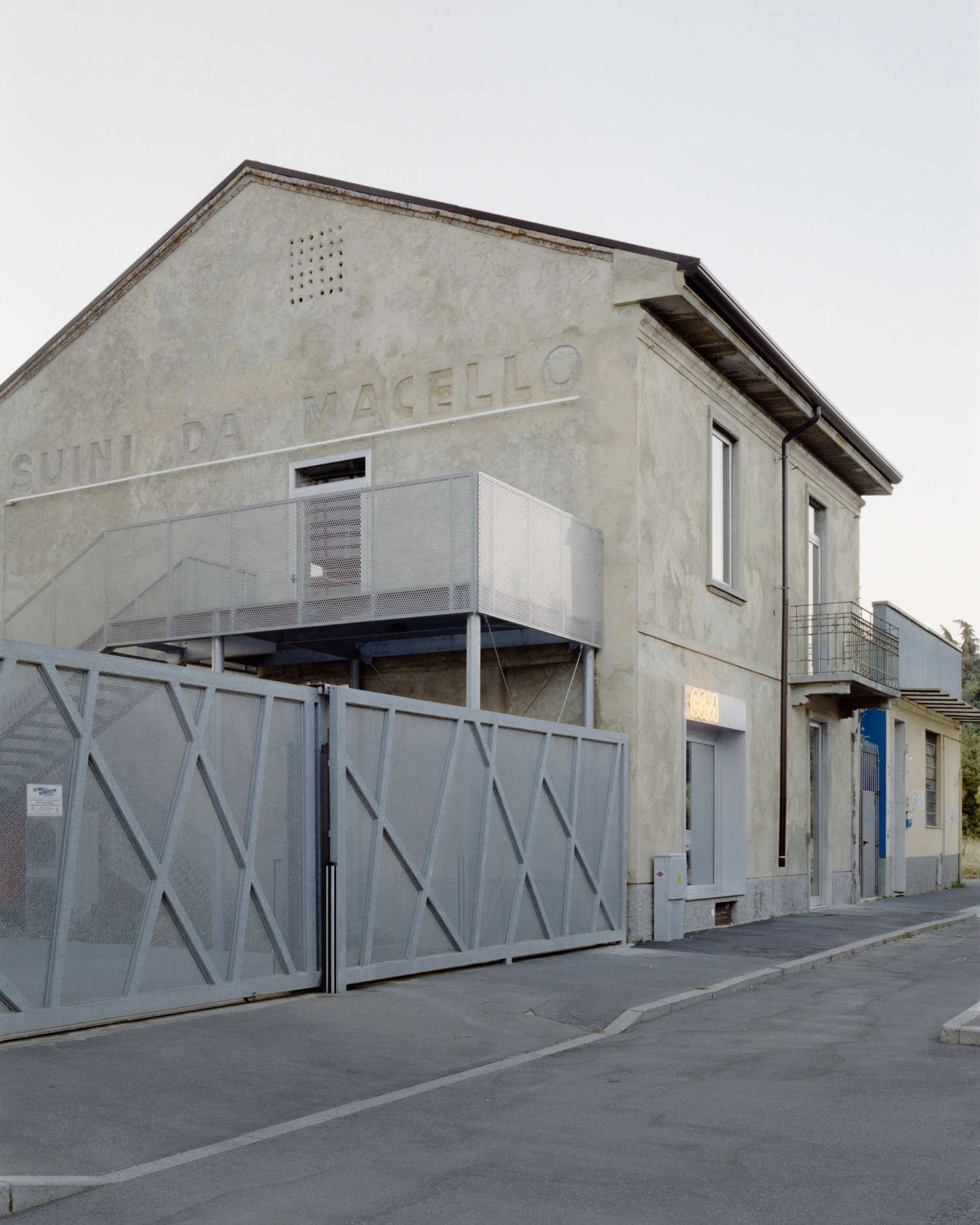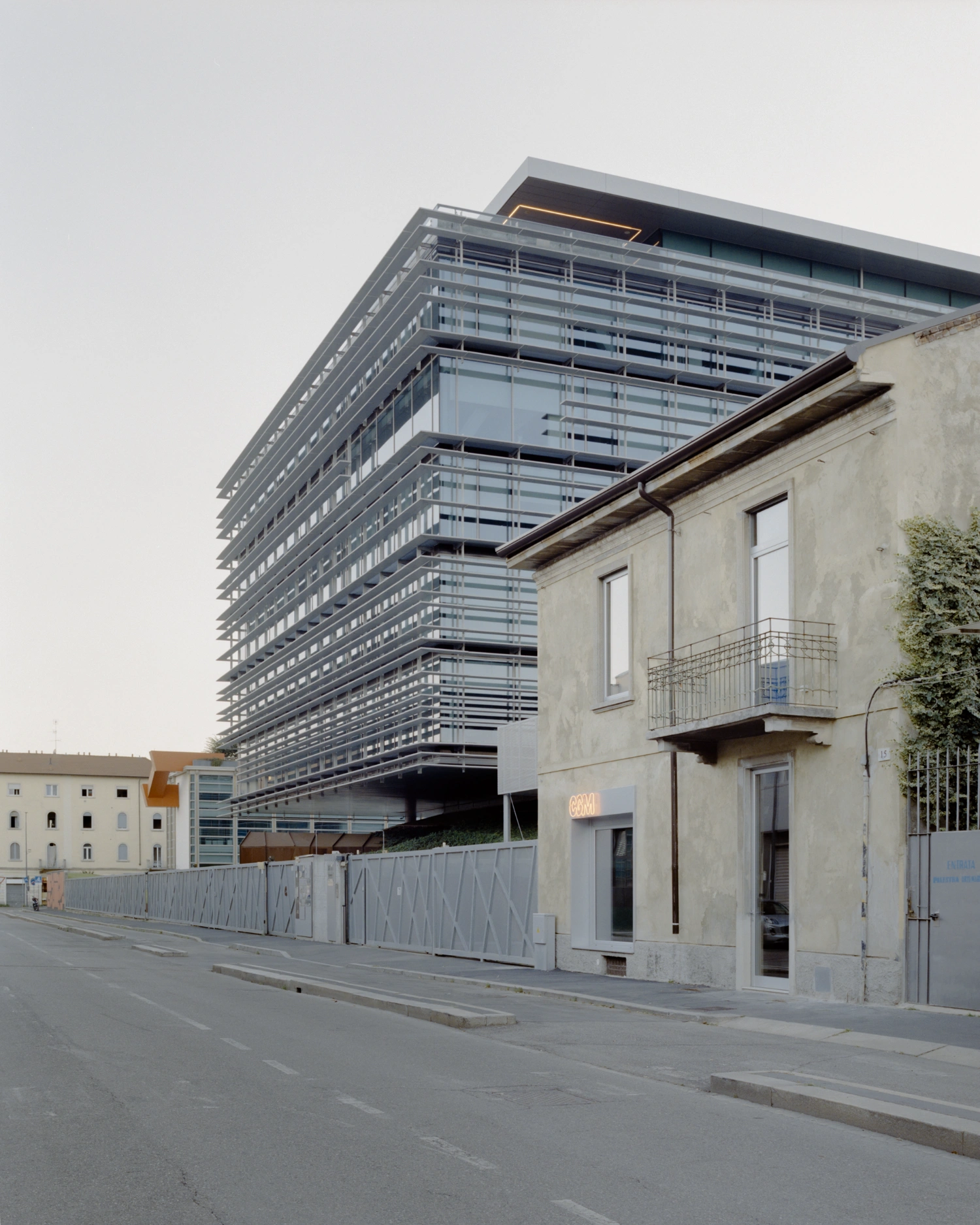In a regenerated corner of Milan, an early‑20th‑century villa becomes Club Giovanile Milano: a defiant fusion of historic structure and cyber‑industrial intervention where dining, sound and architecture collide.
Commissioned by RealStep and executed by co.arch studio, the project retells the villa’s layered history rather than erasing it. The design strategy is purposeful: preserve the scars, and overlay them with an unabashedly contemporary logic.
The first act of transformation lies in the material honesty. Original cement‑tiles, stuccoes and period signage (“SUINI DA MACELLO”) were restored, not whitewashed away. The decision reveals rather than disguises the building’s former function—an ironic gesture, yes, but also one that anchors the bar/club hybrid in its raw urban past. And then the intervening layer: exposed steel ducts, visible systems, industrial skin. This mechanical architecture becomes the design device, a metallic counterpoint to decorative historic frames. The metal veins slice across ceilings and walls, reflecting light, interrupting surfaces, layering time.
Inside, the programme bifurcates. Two expansive halls house live‑music and dedicated “listening” sessions. The acoustics work was done by Labirinti Acustici, while the interiors by OTS – Off the Shelf balance technical precision and creative liberty. By day, CGM functions as a restaurant and listening bar; by night it metamorphoses into a stage and urban club. Furnishings and lighting respond accordingly—daylight reveals the villa’s cornices and decorative heritage, while evening brings the exposed systems and raw surfaces into focus.
The exterior interventions reinforce the interior’s conceptual duality. A large shop‑front window pulls the street inside—an invitation, but also a performance. From it emerges the neon club sign, a marker of new identity. External to the historic envelope, a steel and perforated‑sheet‑metal staircase connects the halls and extends into a terrace: an up‑top listening lounge floating above the street. This extension of the musical experience into the urban realm signals not assimilation but activation of difference.
In a broader urban narrative, CGM’s villa stands in sharp contrast to its immediate neighbour, the innovative campus‑like La Forgiatura, also promoted by RealStep. If La Forgiatura embodies the language of contemporary campus‑infrastructure, then CGM reclines in the guise of anomaly—as though a 1930s relic kept planting flag in the district, refusing smooth integration and instead amplifying its own disjunction. The villa thus becomes a marker of alternative energy: not new merely because of being modern, but modern through difference.
The success of CGM lies in its refusal to choose between heritage museum and hyper‑modern club aesthetic. It chooses both—and neither entirely. The villa’s skin is revealed, peeled, grafted. The design interventions stand out as layered moments of time, material and cultural flux. In doing so, CGM becomes less a vessel for nightlife than a manifesto for how urban interiors—especially in zones of regeneration—can inhabit the tension between past function and future possibility. It projects Milan’s district renewal not by erasing the old but by pivoting it, by turning its industrial past into a sound‑stage for the now.
At the end of the day the space pulses with social and sensory life: the legacy of slaughter‑house steel and tile meets vinyl, low lighting and speaker hum. One doesn’t simply dine or listen—it is to sit within the architecture of tension, where history is material, air is sound, and time is enveloped in metal. Amid Milan’s renovation zone, CGM offers not a quiet homage but a wide‑open experiment.

